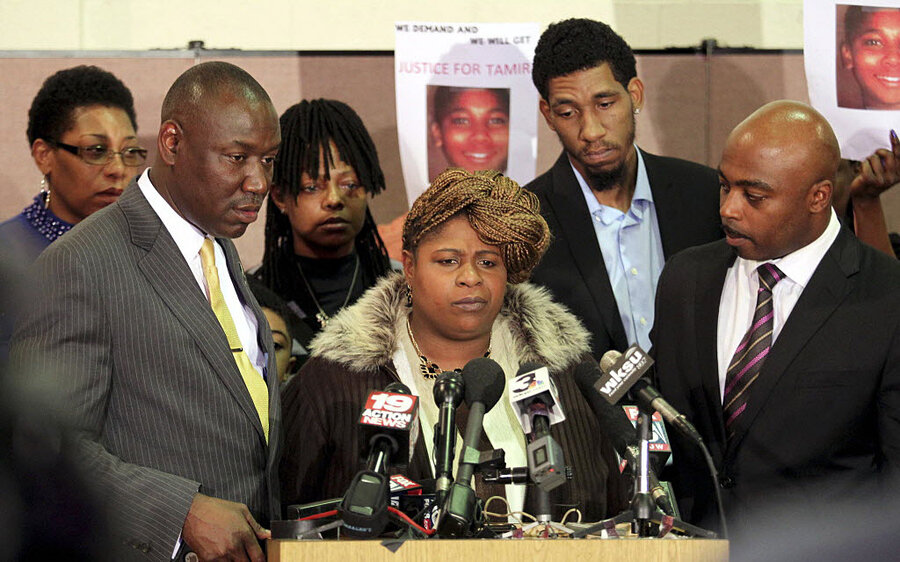Cleveland activists use unusual tactic to seek justice for Tamir Rice
In the pursuit of justice for Tamir Rice, a 12-year-old African American boy who police officers shot and killed in Cleveland last November, members of Rice’s community have decided that it takes a village.
Rather than waiting for prosecutors to file charges against the officers involved in Tamir’s death, a group of community leaders and activists announced plans on Tuesday to invoke an obscure Ohio law to sidestep the prosecutors and appeal directly to a judge.
Deviating from the traditional process might mean action will be taken more quickly, since the case could otherwise sit at the Cuyahoga County Prosecutor’s Office indefinitely while the office prepares to send it to the grand jury.
The 1960 state law allows any “private citizen having knowledge of the facts” of a case to file an affidavit requesting criminal charges. The Rev. Dr. Jawanza Colvin announced at a press conference that the group has filed such an affidavit, citing probable cause to arrest officers Timothy Loehmann and Frank Garmback, who shot Tamir when they saw him with a gun that was later confirmed to be a toy.
“We believe that officers Timothy Loehmann and Frank Garmback caused the death of Tamir Rice in deeds that were unconscionable, reprehensible, and – yes – criminal,” Dr. Colvin said at the press conference.
Meanwhile, Cleveland Police Patrolmen’s Association President Steve Loomis condemned the group’s efforts, accusing them of trying to “hijack the rule of law,” the Northeast Ohio Media Group reported.
"Trying to coerce public officials into filing a criminal charge under direct or indirect threat of mob rule is a very dangerous game," the union leader said.
Walter Madison, an attorney representing Tamir's family, addressed critics like Mr. Loomis who believe the group is working outside of the law or trying to cut corners. He told reporters, “This is not a contradiction. This is not a circumvention. This is simply applying the law that is available so that our government is responsible and accountable to us."
In light of last year’s acquittals of police officers involved in the deaths of unarmed black men, including Eric Garner and Michael Brown, taking the traditional route is unlikely to result in the officers’ conviction, Mr. Madison told The New York Times.
“The writing is on the wall,” Madison said. “If you look at every other instance, it ends up unfavorable to the families.”
Whether the legal process is to blame or not, Madison’s words held true in another recent Cleveland case. County prosecutor Timothy McGinty brought voluntary manslaughter charges against officer Michael Brelo via the grand jury process for his involvement in a 2012 police chase involving 13 officers, 137 shots fired into a vehicle, and the deaths of two unarmed black motorists. Brelo was found not guilty in May, two and a half years after the incident.
Days after Brelo’s acquittal, the Cleveland Police Department agreed to work with the federal government on reforms, following a Department of Justice investigation into Cleveland that found “a pattern or practice of unnecessary or unreasonable use of force.”
The deaths of black citizens at the hands of police, many believe, reflect a troubling racial dynamic in the United States. At the press conference, Joe Worthy, an Ohio director of the Children's Defense Fund, criticized policing strategies in black communities.
“Black communities are policed far more often than white communities,” Worthy said. “So 12-year-old white boys would probably never face the probability of an officer shooting him down for playing with a toy.”









